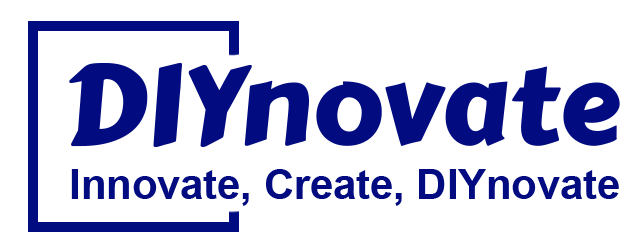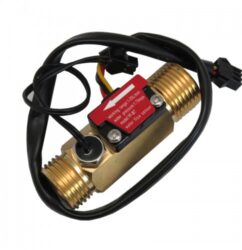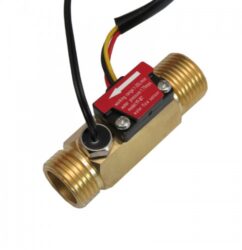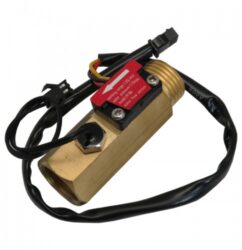- 3D Printer
UPS SERVICE
Shipping & ReturnsSTORES
Find retail locationsFREE SHIPPING
For orders above €100
CUSTOMER CARE
For All Your Questions
- Wireless & IOT
UPS SERVICE
Shipping & ReturnsSTORES
Find retail locationsFREE SHIPPING
For orders above €100
CUSTOMER CARE
For All Your Questions
- Sensors
UPS SERVICE
Shipping & ReturnsSTORES
Find retail locationsFREE SHIPPING
For orders above €100
CUSTOMER CARE
For All Your Questions
- Modules
UPS SERVICE
Shipping & ReturnsSTORES
Find retail locationsFREE SHIPPING
For orders above €100
CUSTOMER CARE
For All Your Questions
- Microcontroller Unit (MCU)
UPS SERVICE
Shipping & ReturnsSTORES
Find retail locationsFREE SHIPPING
For orders above €100
CUSTOMER CARE
For All Your Questions
- Development Boards
UPS SERVICE
Shipping & ReturnsSTORES
Find retail locationsFREE SHIPPING
For orders above €100
CUSTOMER CARE
For All Your Questions
Step 5: 3D Modeling and Slicing Software
Introduction
To become proficient in 3D printing, understanding 3D modeling and slicing software is essential. These tools help you design and prepare models for printing, ensuring accuracy and efficiency. In this guide, we will explore the basics of 3D modeling, the role of slicing software, and tips to optimize your prints.
1. Understanding 3D Modeling Software
3D modeling software allows you to create custom designs for 3D printing. There are various software options depending on your skill level and needs:
Beginner-Friendly Software
- Tinkercad – A browser-based tool with a simple drag-and-drop interface, great for beginners.
- Fusion 360 (Hobbyist Version) – Offers powerful design capabilities with an easy learning curve.
- Blender – A free, open-source tool ideal for artistic and organic modeling.
Advanced Software
- SolidWorks – Industry-standard CAD software used for mechanical and engineering designs.
- Autodesk Fusion 360 – Provides parametric modeling, simulation, and cloud-based collaboration.
- ZBrush – Excellent for sculpting highly detailed organic models.
Choosing the Right Software
Select software based on the type of models you want to create. If you’re designing mechanical parts, use Fusion 360 or SolidWorks. For artistic creations, Blender or ZBrush are better choices.
2. Understanding Slicing Software
Once you have your 3D model, it must be converted into a format that your printer understands. This is where slicing software comes in.
What Does a Slicer Do?
- Converts 3D models (STL, OBJ, or AMF files) into layers.
- Generates G-code, the language that 3D printers use to create objects.
- Allows you to fine-tune print settings such as layer height, infill, and supports.
Popular Slicing Software
- Ultimaker Cura – Free, beginner-friendly, and widely used.
- PrusaSlicer – Optimized for Prusa printers but works with others.
- Simplify3D – Paid software with advanced customization options.
- MatterControl – Includes modeling and slicing in one platform.
Essential Slicing Settings
- Layer Height: Determines print resolution (0.1mm for high detail, 0.3mm for speed).
- Infill Percentage: Affects strength and weight (20% for most models, 100% for solid parts).
- Supports: Required for overhangs exceeding 45°.
- Print Speed: Balances between quality and efficiency (50mm/s is common for beginners).
- Bed Adhesion: Brims and rafts help improve first-layer sticking.
3. Tips for Optimizing Your Prints
- Start with basic models to practice slicing and settings.
- Use preview mode in your slicer to check for issues before printing.
- Experiment with different infill patterns to improve strength without wasting material.
- Regularly update your software to access new features and bug fixes.
- Test small-scale prints before committing to large ones.
Conclusion
Mastering 3D modeling and slicing software is a crucial step toward becoming a proficient 3D printing expert. By learning the right tools and fine-tuning your slicer settings, you can significantly improve print quality and efficiency. In the next step of our “The Essential Guide to 3D Printing” series, we will explore troubleshooting common 3D printing issues to help you overcome challenges and achieve flawless prints.
Stay tuned for the next part of the series!




